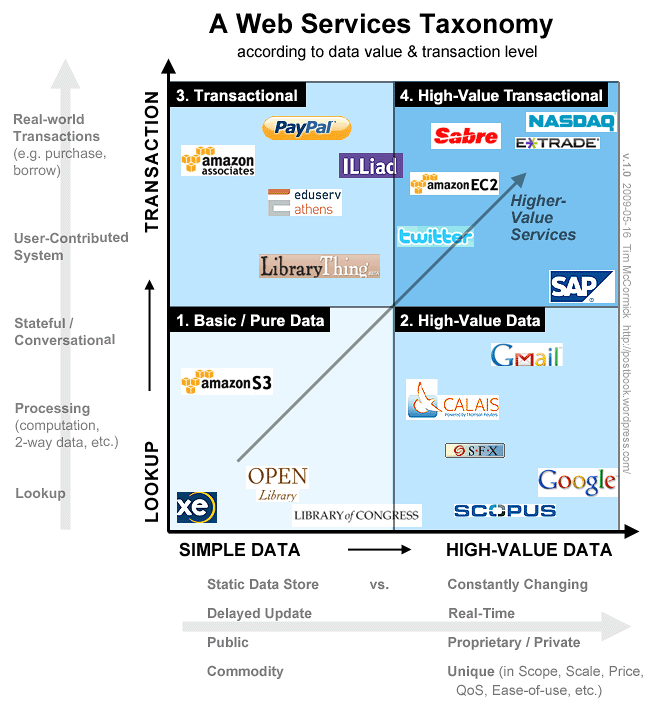full article A Web Services Taxonomy (PDF 84k).
A Web Service, according to a standard definition, is “a software system designed to support interoperable machine-to-machine interaction over a network.” 1
To put it another way, a Web Service is some useful service offered (usually) on the Internet, designed as a sort of building block you can use any way you want.
So, for example, Google Maps, a free service that dynamically draws maps of any location and locates addresses, has been used by thousands of people to build new services such as crime-report maps and real-estate listing tools,
Another way to wrap your mind around Web Services is to consider a range of well-known ones and what they do. That’s what I’ve done in the chart below, with services such as Paypal, Google, Twitter, and Sabre, the airline-reservations system. (click on chart to see full-size):
This chart represents a taxonomy, or classification, of Web Services, constructed by characterizing all services according to two factors:
- Data quality: from simple/commodity to complex/unique
- Transaction level: from basic lookup to real-world transaction.
In my full article, A Web Services Taxonomy (PDF 84k), I define what I mean by those terms, and discuss representative examples of Services that exhibit varying degrees of these characteristics.
Based on this, I suggest that the Services with the most usage, customer value, and/or revenues typically have more complex/unique data, and/or are more transactional. In other words, the typically-cited data lookup services are not where most of Web Services value lies.
See also the above chart in full size, or the full article (PDF 84k).

